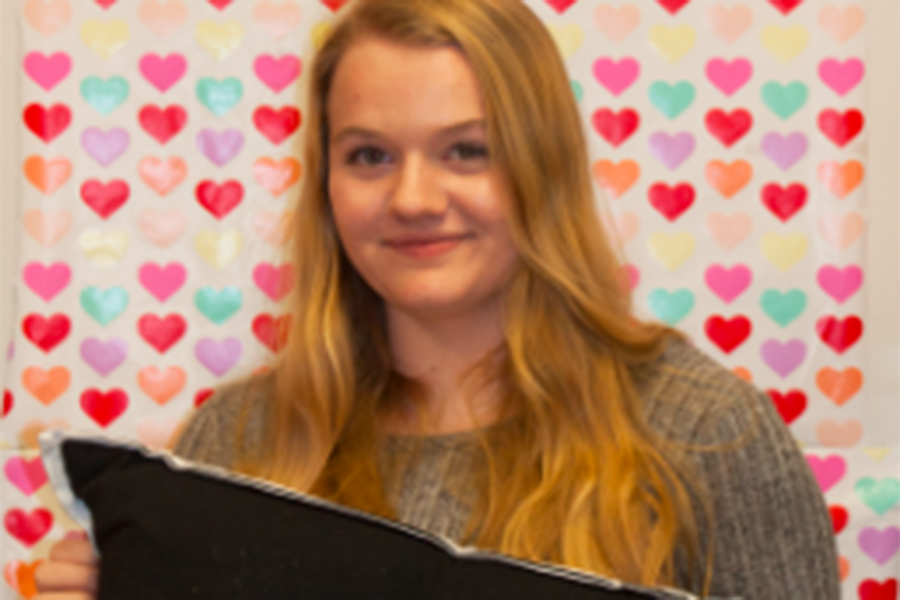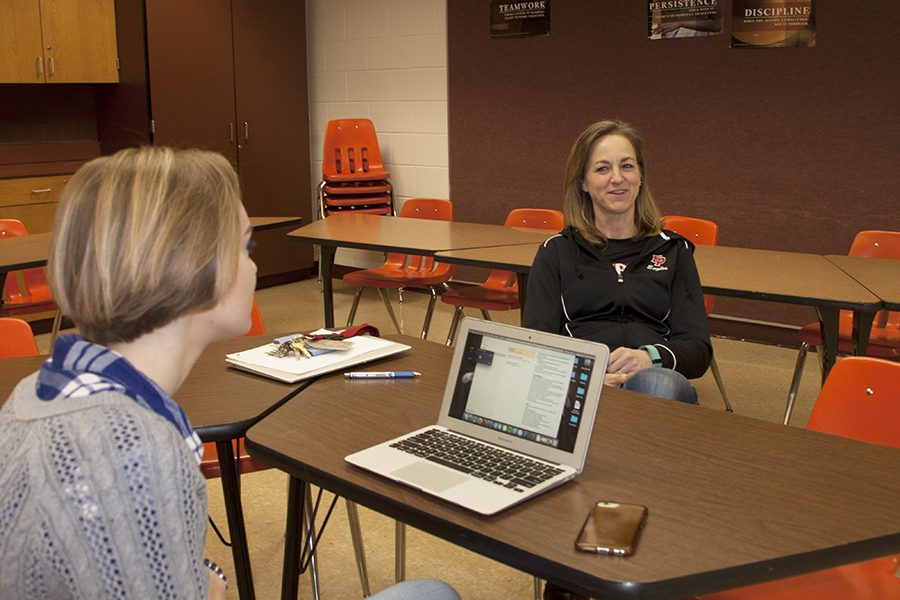Once upon a time
February 9, 2017
Relationships: yesterday, today, and tomorrow
What is love?
Once upon a time relationships were completely different. According to Amanda Chatel, a freelance journalist, described the dating style of the pre-19th century as “void of touching and sexual thoughts.”
In the early 1900s dating emerged. This new style of courtship brought about a sense of freedom but still kept with more conservative views. Often times a man would take the role of a “gentleman caller,” and the dates were most certainly chaperoned.
In the 1920s dating became even less conservative with young couples moving away from their parent’s supervision with the emergence of movie theaters and prom. Prohibition also played a part in the expansion of freedom, and dating multiple people became acceptable, according to Chatel.
During the 1940s and 50s World War II consumed the dating landscape. Dating was more focused on finding a husband and someone to settle down with versus someone to have fun with.
In the 1960s and 70s dating was all about enjoying, as Shakespeare would say, “the pleasures of the flesh.” Premarital sex became the norm, said Chatel, and the rise of feminism, including the availability of contraception and abortion, also increased the appeal of sex.
In the 1990s dating was no longer entirely about love, rather “hooking up”. No-strings-attached relationships and “hanging out” were popular. But soon this “hanging out” led to more confusion about what really constitutes as a date.
In today’s world of dating, a first date is more likely to happen online than in person, and “hooking up” is still very much a part of the courtship process, said Chatel.
The meaning and purpose behind dating and love are constantly changing, but the differences between relationships then and now aren’t night and day.
The crush stage
Just like dating, having a “crush” is a new concept for recent generations to adapt to. With an online presence, having a crush can be something as simple as thinking a guy on Instagram is hot. However, the process of pre-dating is far more complex than older generations may expect.
Take texting and social media as an example. Sophomore Tatum Gunderson is currently in a “pre-dating” or “crush” phase with someone and uses texting as her main source of communication with him. “When you’re texting someone, you have the opportunity to talk about more things, so I feel like I’m closer to him,” said Gunderson. “Texting has a good effect on relationships because you’re always connected.” Not only does she text her crush more than she sees him, but she thinks it’s a positive tool for every relationship.
However, the crush stage should be approached far differently from actual dating, claims Gunderson. “Once it would turn into a relationship, I feel like it would be better to see each other more than texting, but I’d still want to maintain that online presence.” To many couples, and even mutual crushes, texting and social media is essential to love.
Create boundaries
Once a relationship is established, boundaries become the next challenge. Two people often disagree with physical,emotional and mental boundaries, and sticking to them can be even more difficult. “Our boundaries were me setting them and slowly taking them away when I got used to it,” said sophomore Mikayla Capouch. Because physical appearance and sex is pertinent in dating these days, talking about boundaries is crucial to a healthy relationship, said Capouch.
The process of creating boundaries before a relationship is another method of constructing a healthy relationship, too. While some people tend to jump into relationships without knowing the other person, Capouch decided to get to know her girlfriend through text for three months before dating. Because they knew each other so well, Capouch said “nothing much changed” when they began dating. Although dating is different from couple to couple, and social media emphasizes one certain way people should date, planning and talking is a completely valid way to go about modern romance.
A relationship at length
Senior Belle Qualey and her boyfriend senior Brady Anderson have been dating since May of sophomore year. The two met through hockey and bonded over their passion for the sport. Just this past August, Brady joined a junior hockey league in Wyoming and will be returning this April after the season ends.
For now the couple is doing their best to make an easy transition into this new distance brought into their relationship. “At the beginning it was kind of difficult for him to adjust to Wyoming,” said Qualey. The 14-hour drive makes weekend visits impossible, so the two wait patiently for their time together every few months until Brady comes back for good.
“At the beginning it was like okay, let’s create lists for winter break of things we’re going to do. We just try to get him excited for little things when he comes back. It is something he can do while he’s there,” said Belle.
Of course with today’s access to technology, communication is fast and simple. “Having technology like Skype and Facetime, I mean even just texting. We don’t have to send letters even though it is nice to get things in the mail sometimes,” joked Qualey. “We run pretty busy lives, so we don’t text all that much, but I tend to like call him for typically like an hour or two before bed when things start to lay low. When I get done with homework and he gets done with hockey, we’ll Facetime each other just for a little bit and talk about our days and any crazy thing that happened.”
As for the future, the two plan to make the distance much shorter. Both Belle and Brady are planning on going to the same college or colleges within a short distance of each other. Belle has committed to the University of Minnesota Duluth (UMD) while Brady is still deciding between UMD and another school fifteen minutes away with the chance of playing on a higher level hockey team. The two are looking forwards to what the future will bring and they are excited to be able to do it together. “He still gets to do what he loves and I get to do something I love. We believe the best in each other, so we just continue to do our own things but we also trust in each other that we will make things work whatever happens,” said Qualey.
Changing love
Technology reinvented the meaning of dating, and its grasp on teens affects sex, communication and boundaries. “Because of technology, there might even be more casual dating,” said health teacher Roxy Myhre. “When I was in high school, it was very common for people to be dating all through high school.”
Even with some modern changes, dating may not have dramatically changed over recent decades. Although teens and dating culture have changed, Myhre said “the dates themselves are still the same.” She went on to discuss how, even though dating used to be more personal and private, it really hasn’t changed that much.
When details do adjust with time, teens are faced with hard choices about dating. Young people today do not feel as much pressure to date for the purpose of finding a spouse, said Myhre. “We have more single Americans in our country than we have married Americans, and that’s never happened before,” she said, pointing out a bright side.
A downside, as mentioned earlier, is boundaries. Myhre said that relationships are more physical now, but there are ways to stay away from the increasing appeal of sex. About boundaries she said, “Think about what you want them to be, have them before you even meet anybody and be confident enough to stick to those and not compromise those.”
Perhaps it doesn’t matter what changes there are or what changes there might be in the future. What matters is the values that individuals and couples choose for themselves, she said.





